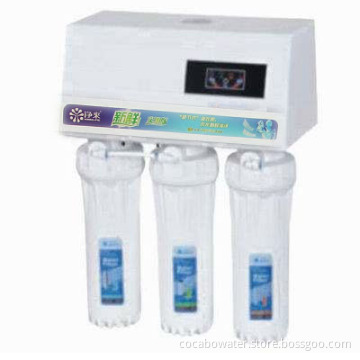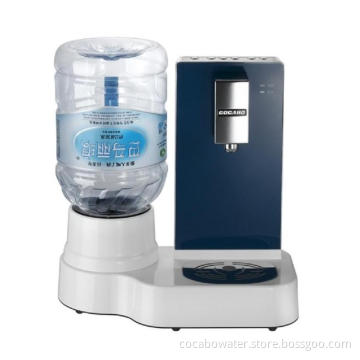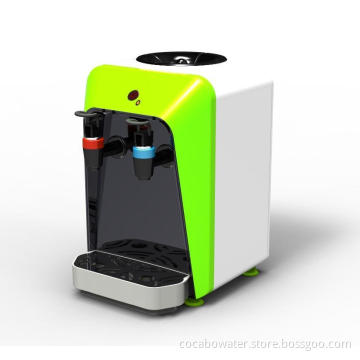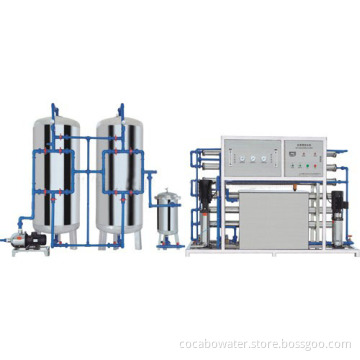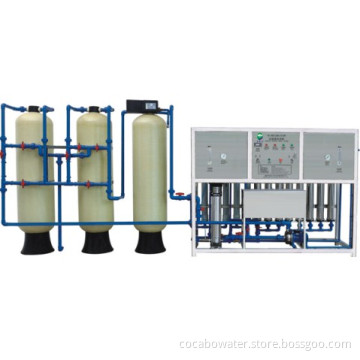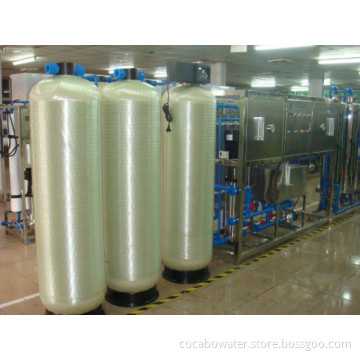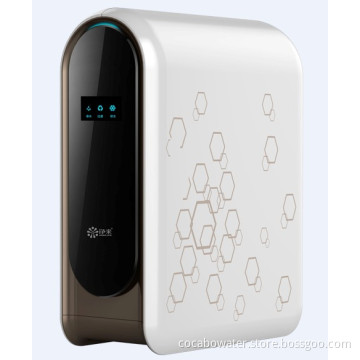
One Grade Reverse Osmosis (RO) Water Purification Machine
- Payment Type:
- L/C, T/T
Quantity:
Your message must be between 20 to 2000 characters
Contact NowBasic Info
Basic Info
| Place of Origin: | Shenzhen, China |
|---|---|
| Payment Type: | L/C, T/T |
Product Description
Product Description
Reverse Osmosis water purification (one grade) machine:
A. Output water flux: 2M³ /h Water temperature: 25
B. Output water quality: Accord with National bottle drinking water standard GB17323-1998.
Brief Introduction To The Machine
Water purification is the removal of contaminants from untreated water to produce drinking water that is pure enough for its intended use, most commonly human consumption. Substances that are removed during the process of drinking water treatment include suspended solids, bacteria, algae, viruses, fungi, minerals such as iron, manganese and sulphur, and man-made chemical pollutants including fertilisers.
Quartz sand filter
Fuction: The Multi-media filter can effectively remove different types of particles, such as suspended solids (turbidity), colloidal compounds, and etc. This process will reduce the load on the back-end equipment and make the SDI less than 3ppm. The filter is fitted with an upper diffuser, a lower diffuser which making the rinsing and backwashing of the media more evenly and thoroughly.
Active Cabon Filter
Fuction: The active-carbon filter is most commonly used for removal of colour, odour, organic substance and heavy metal element. After filtration, the taste and transparency of water can greatly improved. The filter is fitted with an upper diffuser, a lower diffuser which making the rinsing and backwashing of the media more evenly and thoroughly.
PP Filter
Fuction: The precision filter is the final filtration equipment to ensure the quality of the water infeeding the RO System. The system adopts a 5μ M precision filter which can filter particles larger than 5μ M, thus guarantees the protection of RO system
RO system
Fuction: Reverse osmosis is a liquid filtration method which removes many types oflarge atomic molecules from smaller molecules, by forcing the liquid at high pressure through a membrane with pores (holes) just big enough to allow the small molecules to pass through. It is most commonly known for its use in drinking water purification from removing the salt and other substances from the water molecules.
Principle: It works by using pressure to force a solution through a membrane, retaining
The solute on one side and allowing the pure solvent to pass to the other side.
A. Output water flux: 2M³ /h Water temperature: 25
B. Output water quality: Accord with National bottle drinking water standard GB17323-1998.
Brief Introduction To The Machine
Water purification is the removal of contaminants from untreated water to produce drinking water that is pure enough for its intended use, most commonly human consumption. Substances that are removed during the process of drinking water treatment include suspended solids, bacteria, algae, viruses, fungi, minerals such as iron, manganese and sulphur, and man-made chemical pollutants including fertilisers.
Quartz sand filter
Fuction: The Multi-media filter can effectively remove different types of particles, such as suspended solids (turbidity), colloidal compounds, and etc. This process will reduce the load on the back-end equipment and make the SDI less than 3ppm. The filter is fitted with an upper diffuser, a lower diffuser which making the rinsing and backwashing of the media more evenly and thoroughly.
Active Cabon Filter
Fuction: The active-carbon filter is most commonly used for removal of colour, odour, organic substance and heavy metal element. After filtration, the taste and transparency of water can greatly improved. The filter is fitted with an upper diffuser, a lower diffuser which making the rinsing and backwashing of the media more evenly and thoroughly.
PP Filter
Fuction: The precision filter is the final filtration equipment to ensure the quality of the water infeeding the RO System. The system adopts a 5μ M precision filter which can filter particles larger than 5μ M, thus guarantees the protection of RO system
RO system
Fuction: Reverse osmosis is a liquid filtration method which removes many types oflarge atomic molecules from smaller molecules, by forcing the liquid at high pressure through a membrane with pores (holes) just big enough to allow the small molecules to pass through. It is most commonly known for its use in drinking water purification from removing the salt and other substances from the water molecules.
Principle: It works by using pressure to force a solution through a membrane, retaining
The solute on one side and allowing the pure solvent to pass to the other side.
Related Keywords
Related Keywords



